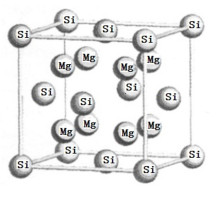Professional industry ceramic supplier, silicon nitride, silicon carbide, aluminum nitride and any other kinds of ceramics.
Overview of magnesium silicide Mg2Si powder
Magnesium silicide (English name: Magnesium silicide), an inorganic compound, has a chemical formula of Mg₂Si and a molecular weight of 76.71. Cyan or light purple powder, cubic crystal. The melting point is 1102°C and the relative density is 1.94.
It is insoluble in cold water and decomposes in hot water. It can be completely decomposed into elemental substances when heated to 1200°C in a vacuum or under a hydrogen stream. Stable to lye. Decomposes in acid and produces silane and hydrogen. Preparation method: It is prepared by reacting magnesium powder and silicon at 650~1200℃.
Mg2Si is the only stable compound in the Mg-Si binary system. It has the characteristics of high melting point, high hardness, and high elastic modulus. It is a narrow band gap n-type semiconductor material. It is used in optoelectronic devices, energy devices, lasers, semiconductor manufacturing, Constant temperature control communication and other fields have important application prospects.
The Mg2Si crystal has an inverse fluorite structure and belongs to a face-centered cubic lattice. The space group is Fm3m, the group number is 225, and the lattice constant a=0.6391nm. In the crystal structure, each Si atom is located at the (0,0,0) position, and the number of bits in the Chemicalbook is 8, forming a face-centered cubic structure with side length a. The Mg atom is located at the (0.25, 0.25, 0.25) position, and each Mg atom is located at the center of the tetrahedron composed of Si atoms, forming a simple cubic structure with a side length of a/2.

Magnesium silicide Mg2Si powder application
Magnesium silicide is generally used to produce aluminum alloys, which contain about 1.5% of magnesium silicide, which has the function of age hardening, can form GP zone and very uniform precipitation phase, thereby improving the strength of the alloy.
Magnesium silicide is used to produce 6000 series aluminum alloys, in which the content of aluminum alloy is about 1.5%. The bonded gold can harden to form Guinier-PRESTON zones and very fine precipitates, both of which will lead to an increase in the strength of the alloy.
The main potential electronic application of MG2Si is a thermoelectric generator.
Magnesium silicide is mainly used to synthesize other silicides.
Magnesium silicide is used to synthesize MgSin2 powder. It belongs to the method of preparing non-oxide ceramic powder.
Magnesium silicide is a by-product of silicide.
Magnesium silicide Mg2Si powder price
The price of magnesium silicide Mg2Si powder will vary randomly with product factors such as production cost, transportation cost, international situation, exchange rate, supply and demand for magnesium silicide Mg2Si powder products. Tanki New Materials Co., Ltd. aims to help various industries and chemical wholesalers find high-quality, low-cost nanomaterials and chemicals by providing a full set of customized services. If you are looking for magnesium silicide Mg2Si powder product materials, please feel free to contact us for the latest price of magnesium silicide Mg2Si powder.
Supply of magnesium silicide Mg2Si powder
As a global magnesium silicide MgSi2 powder supplier, Tanki New Materials Co., Ltd. has extensive experience in the performance, application and cost-effective manufacturing of advanced and engineered materials. The company has successfully developed a series of powder materials (molybdenum disilicide, titanium silicide, calcium silicide, iron boride), high-purity targets, functional ceramics and structural devices, and provides OEM services.
| Magnesium Silicide Properties | |
| Other Names | dimagnesium silicide, dimagnesium monisilicide, |
| MgSi, Mg2Si powder | |
| CAS No. | 22831-39-6 |
| Compound Formula | Mg2Si |
| Molecular Weight | 76.7 |
| Appearance | Gray Black Powder |
| Melting Point | N/A |
| Boiling Point | N/A |
| Density | 1.94 g/cm3 |
| Solubility in H2O | N/A |
| Exact Mass | 75.94701 |
| Magnesium Silicide Health & Safety Information | |
| Signal Word | Danger |
| Hazard Statements | H261 |
| Hazard Codes | F |
| Risk Codes | 14/15 |
| Safety Statements | N/A |
| Transport Information | UN 2624 4.3/PG 2 |
